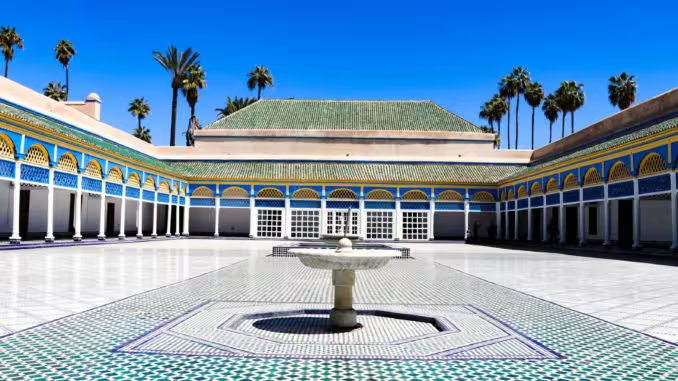Since its beginnings, Marrakech has been a city of great cultural diversity. Oriental, Berber and Andalusian influences can be seen everywhere in the city. This is reflected in its architecture, art, crafts and gastronomy, giving Marrakech a unique art of living.
Architecture and crafts intimately linked
Marrakech's architectural features are too numerous to list. But it's impossible not to mention the colour that covers the ramparts and has earned it its nickname of the "red city". This inimitable colour can also be seen on some of the rather plain facades of the riads in the medina (old town). When you open the door, you'll be greeted by a scene of ceramics, mosaics, plants and fountains. These homes, particularly popular with Westerners, reflect the finesse and skill of local craftsmen. By restoring these houses, they perpetuate ancestral skills.
Moroccan cuisine: the crossroads of flavours
Spices, dates, sun-drenched fruit and vegetables, olive oil, honey... Marrakech's culture is also all about Morocco's most mouth-watering flavours. Couscous, tajines, pastillas and mint tea are the pride of a country renowned the world over for its gastronomy. They have a special flavour when enjoyed in the intoxicating night-time atmosphere of the famous Djemaa el Fna square!
A city of art and history
Since the 19th century, Marrakech has exerted a fascination on artists from all over the world who have visited it. This past has given rise to a number of vocations among young Moroccans, who combine tradition and modernity in their works. Artistic life is therefore very dynamic, and a number of exhibitions and vernissages are organised each year, notably at the Marrakech City Museum.
The riads
The meaning of the word "riad" means "garden". By extension, it refers to traditional Moroccan houses, built around a patio and located in the medina (old town). These houses are closed off from the outside world, and so cultivate a certain mystery. It's easy to stroll through the streets of the medina without realising that all around you are architectural gems. The interiors are rich in plants, fountains, mosaics and arabesques. Several rooms are typical of riads and form part of Marrakech culture, such as the patio, the hammam and the roof terrace. Riads are extremely sensual homes where the rustle of water mingles with the scent of bougainvillea in a play of chiaroscuro.
The benefits of tourism
Marrakech is full of these "dar" ("house" in Arabic). Nevertheless, they had been neglected by wealthy populations, who for a time preferred the modernity of the outlying districts to the insalubrity of the medina. But with the boom in tourism in Marrakech, major renovation work was undertaken in the city centre, bringing the riads back into line with the tastes of Moroccans and Westerners alike. Many riads have now been converted into restaurants or hotels. Over the last fifteen years, many Westerners have been buying riads as second homes or year-round residences.
The medina and its souks
Although they are sometimes threatened by concrete renovation, the renewed interest in riads has boosted arts and crafts in construction in Marrakech. So much so that, at the same time as riads are making a comeback, the medina has been enriched by new craftspeople, who you can see in the souks. The souk is huge and difficult to find your way around. It is made up of several quarters: the dyers' quarter, the blacksmiths' quarter, the Koranic school and so on. Don't hesitate to discuss prices, which are often well above their real value! This is also part of Marrakech's culture...

